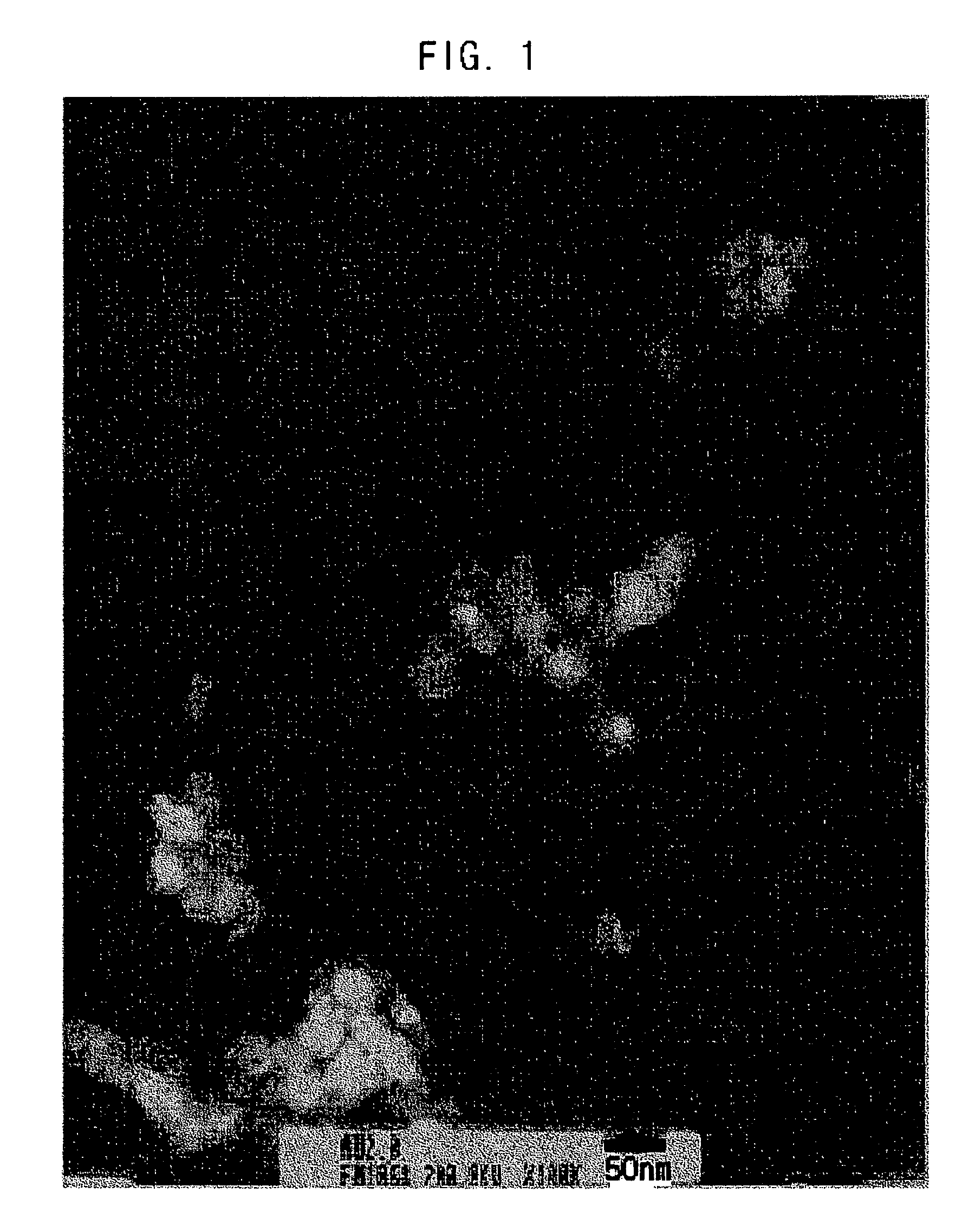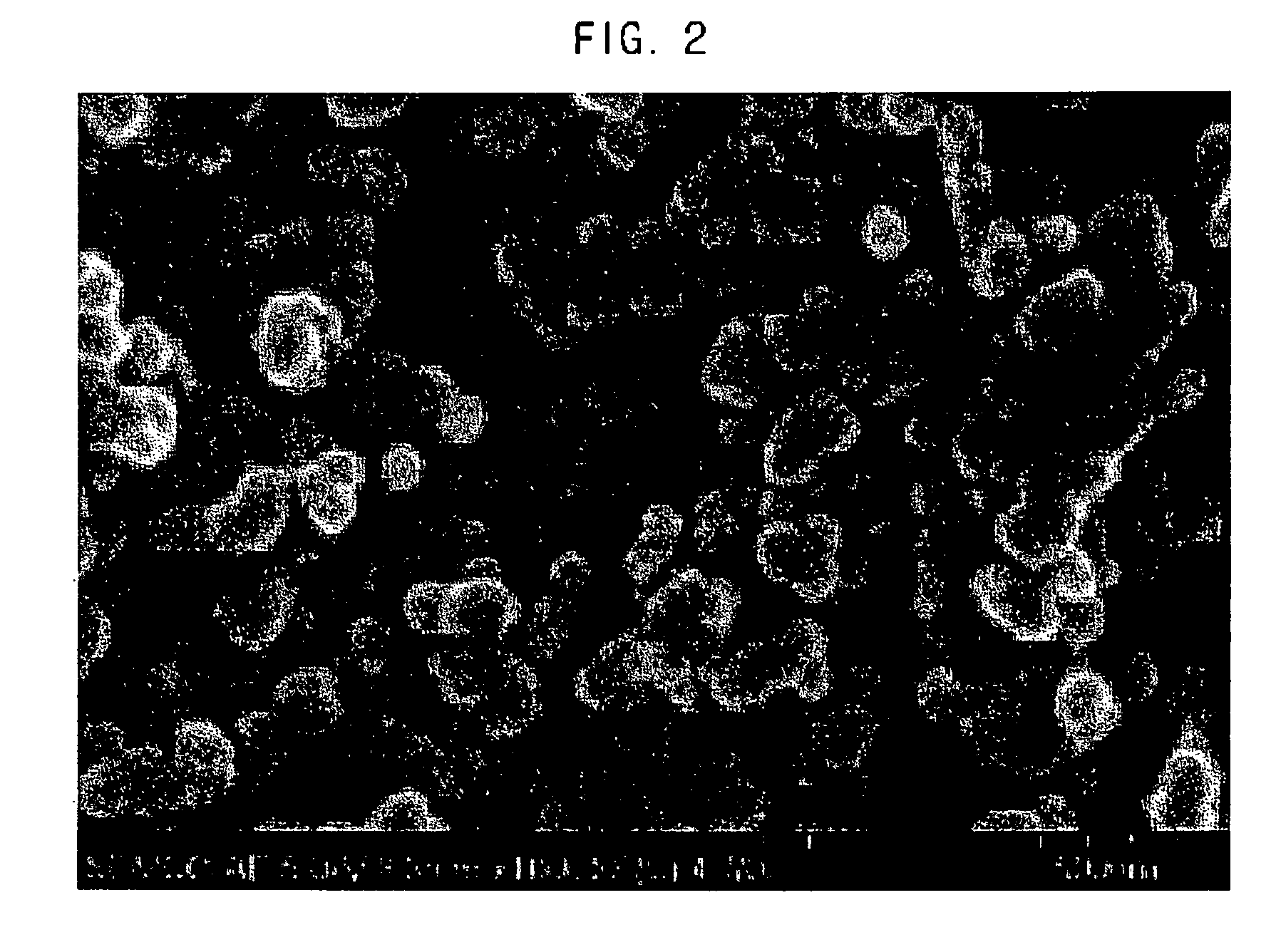Method for manufacturing copper nanoparticles using microwaves
a technology of microwaves and nanoparticles, which is applied in the direction of polycrystalline material growth, crystal growth process, transportation and packaging, etc., can solve the problems of high production cost, difficult mass production production, and inability to control the size, shape, and particle size distribution, etc., and achieve excellent dispersibility
- Summary
- Abstract
- Description
- Claims
- Application Information
AI Technical Summary
Benefits of technology
Problems solved by technology
Method used
Image
Examples
example 1
[0049]After copper sulfate 0.1 mole, sodium hypophosphate 0.4 mole, PVP 1 mole and ethylene glycol 500 ml were mixed in a beaker and were heated to 40° C., the mixture solution were dissolved while agitating. The prepared mixture solution was irradiated with microwaves for 3 minutes in a microwave oven. When the mixture solution turned to dark brown by the reduction reaction, irradiating of microwaves was stopped and 500 ml of cooled distilled water was added to the mixture solution for quick-freezing. Using centrifugation, the copper nanoparticles of dark brown was recovered, washed with acetone and distilled water 3 times, and dried in the vacuum dryer of 50° C. for 3 hours to obtain 6 g of the copper nanoparticle powder.
example 2
[0050]After copper sulfate 0.2 mole, sodium hypophosphate 0.8 mole, PVP 2 mole and ethylene glycol 1000 ml were mixed in a beaker and were heated to 40° C., the mixture solution was dissolved while agitating. The prepared mixture solution was irradiated with microwaves for 7 minutes in a microwave oven. When the mixture solution turned to dark brown by reduction reaction, irradiating of microwaves was stopped and 1000 ml of cooled distilled water was added to the mixture solution for quick-freezing. Using centrifugation, the copper nanoparticles of dark brown was recovered, washed with acetone and distilled water 3 times, and dried in the vacuum dryer of 50° C. for 3 hours to obtain 12 g of the copper nanoparticle powder.
[0051]FIG. 1 represents a TEM image of the copper nanoparticles obtained in Example 1 and FIG. 2 represents a SEM image of the copper nanoparticles obtained in Example 1. As shown in FIGS. 1 and 2, it is noted that the copper nanoparticles have a particle size of 30...
PUM
| Property | Measurement | Unit |
|---|---|---|
| Temperature | aaaaa | aaaaa |
| Substance count | aaaaa | aaaaa |
| Power density | aaaaa | aaaaa |
Abstract
Description
Claims
Application Information
 Login to View More
Login to View More - R&D
- Intellectual Property
- Life Sciences
- Materials
- Tech Scout
- Unparalleled Data Quality
- Higher Quality Content
- 60% Fewer Hallucinations
Browse by: Latest US Patents, China's latest patents, Technical Efficacy Thesaurus, Application Domain, Technology Topic, Popular Technical Reports.
© 2025 PatSnap. All rights reserved.Legal|Privacy policy|Modern Slavery Act Transparency Statement|Sitemap|About US| Contact US: help@patsnap.com



